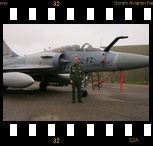
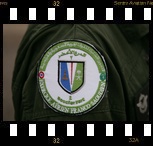
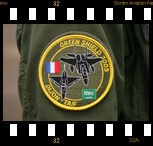
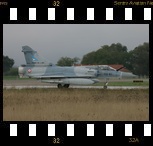

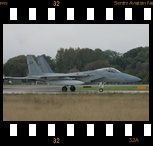
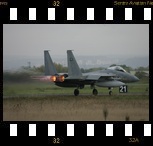
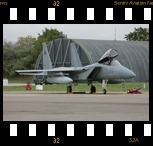
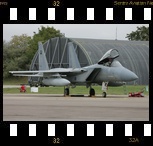
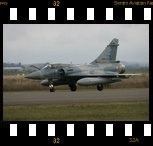

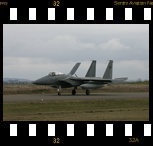
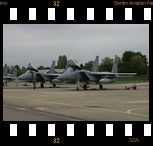
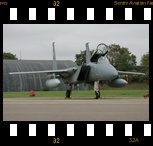
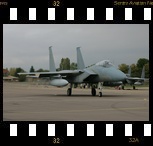
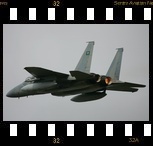
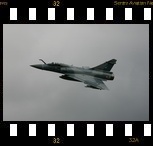
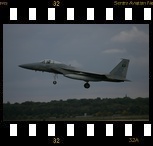
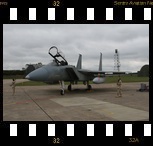
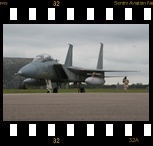

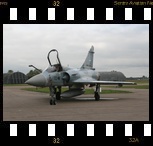
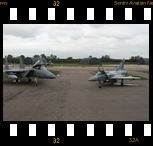



Exercise Green Shield at DijonExercise Green Shield at DijonAt the airbase of Dijon (Base Aerienne 102 Dijon, named after First World War pilot “sous-lieutenant Guynemer”, ICAO code LFSD), a special exercise (named “Green Shield”, or “Bouclier Vert” in French) took place the first 2 weeks of October 2009, starting on October 05th, ending on Thursday 15th. On October 01st 2009, 5 Boeing (McDonnell Douglas) F-15C and 1 F-15D aircraft of the Royal Saudi Air Force landed on the tarmac of Dijon airbase, located in the center of France. In December 2007, the French Air Force paid a visit to Saudi-Arab during the exercise “Tiger Gust” and in 2009 the Royal Saudi Air Force returned for a counter-visit. Supported by several C-130 transport aircraft carrying groundcrew (~170 groundcrew) and material, with a KE-3A tanker aircraft for air-to-air refueling, the 6 F-15’s arrived after a long flight from the TAIF airbase in the Saudi-Arab Kingdom. The TAIF wing is a frontline wing in the Royal Saudi Air Force, dedicated to protect the Holy Islamic places in the country, ten pilots were present in the Green Shield exercise. The C-130 transport aircraft departed after unloading the cargo and groundcrew, the KE-3A tanker was not involved in the exercise and remained at the Istres airbase in the south of France. The departure of all involved aircraft back to Saudi-Arab was on the morning Friday October 16th. Flying assetsAt Dijon airbase there are 2 squadrons, located “Escadron de Chasse” (Fighter squadron) EC 1/02 “Cigognes” flying the Dassault Mirage 2000-5 and “Escadron d’Entraînement” (Training squadron) EE 5/02 “Cote d’or” flying the Dassault Alpha-Jet. These 2 squadrons engage in the “Green Shield” exercise, flying mission with and against the Saudi F-15s, whereby the Mirage 2000-5 will fly in Air Defense role and the Alpha-Jets will have a supporting role. The first missions of the F-15s were meant to familiarize the Saudi pilots with the French weather in October and the French flight regulations and airspace procedures. Later during the first week, combined missions were flown with and against Mirage 2000’s, 4 F-15s against 4 Mirage 2000s or 2 F-15s with 2 Mirage 2000 against 2 F-15s and 2 Mirage 2000s. During the second week of the exercise, more complex mission will were flown, with more and different aircraft. Then the Dassult Rafales of BA St. Dizier airbase played a larger role in the exercise.As both the F-15s and the Mirage 2000-5s are used in the Air Defense role, the focus in this exercise is on the various aspects of Air Defense and Air Superiority. When air-to-ground aspects are involved, the French Air Force supplies aircraft from nearby airbases of BA St.Dizier (Dassault Rafale) and BA Nancy (Dassault Mirage 2000D). A 2-seater Mirage 2000 from BA Orange is available to give the Saudi pilots the opportunity to fly in a Mirage 2000. As one of the Saudi goals of the exercise is to train the rescue of a downed pilot (Combat Search And Rescue, CSAR), a CSAR mission was planned during the first week of the exercise. An Eurocopter EC725 “Caracal” CSAR helicopter from BA Cazaux was temporary based at BA Dijon for that purpose. As additional assets a Eurocopter EC AS332 SuperPuma and a C-160G Gabriel ELINT (for electronic warfare) were present at BA Dijon too. A French Boeing E-3F AWACS participated in the exercise, but it flew from it’s homebase BA Avord. GoalsThe base commander of BA Dijon, Colonel Paccagnini briefed the audience about the participants and the goals of the exercise. He explained that this was the first time that the Royal Saudi Air Force deployed as an autonomous unit into Europe, using both tanker- and cargo support for the deployment.The Royal Saudi Air Force had a number of goals for this exercise. The first goal was to train in Combat Search And Rescue (CSAR). The second goal was to train in Electronic Warfare, which was exercised at the POLYGONE Electronic Warfare range in the north-eastern part of France. And the third goal was to train the LINK16 interoperability with the French Air Force E-3F and Rafales. The French Air Force had as main goal to improve the cooperation between the pilots of the 2 countries. The common goals for both countries were to exchange experience, improve (air) combat skills, improve aircrew coordination and to enhance the relationship between the 2 countries. Three missions per day are planned, of which 2 missions will be flown by Saudi and French aircraft in various roles. A third daily mission will be flown by French aircraft only. 2 main exercise areas are reserved 2 weeks for the exercise, one north and one south of Dijon airbase. One of the “lessons learned” during the first week of the exercise was that the first CSAR mission eventually required more fighter aircraft to control the area and to give protection to the slow moving helicopters at the same time. Colonel Al Amri Hamed Rafea, the Royal Saoudi Air Force exercise director at Dijon, stated: “During international exercises in which we take part, we learn always much. But, we particularly wished to work with the French because during previous exercises, they showed great qualities. They profit from an excellent level in tactics, in electronic warfare and in interallied joint operations.” Visit
Thanks to SIRPA.AIR (Capt. Guirbal) and BA 102 Dijon airbase (Capt. Bovet and Asp. Perussel) for their assistance during the Green Shield Media Day on October 09th 2009.
All photo's:
|
                        |
 Back to top of page
Back to top of page